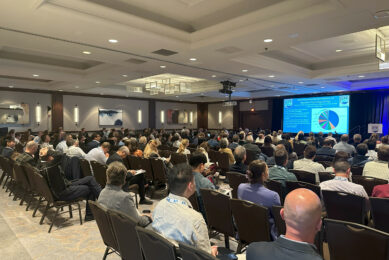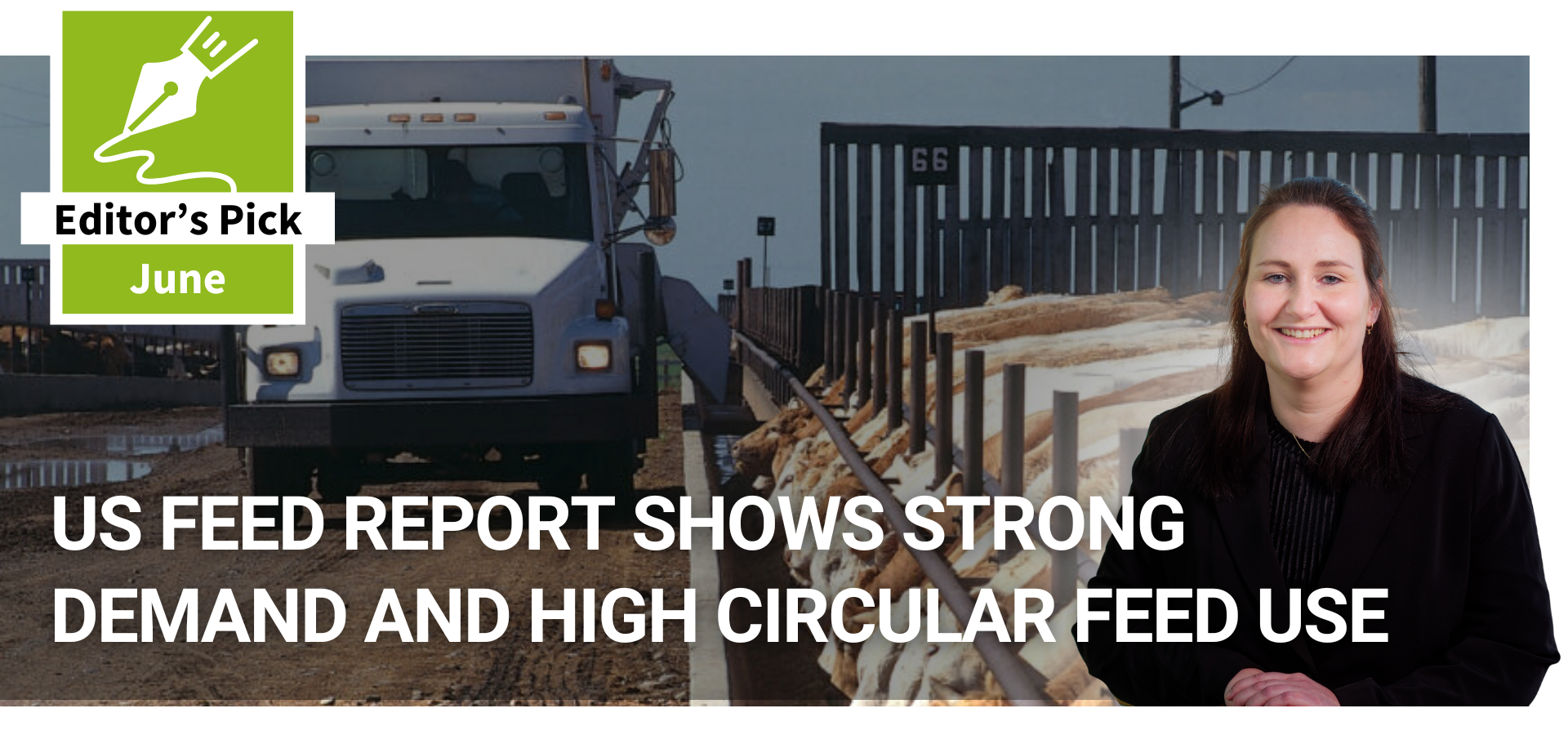Binding mycotoxins: A benchmark study

The co-occurrence of multiple mycotoxins in feed has a serious impact on the performance and well-being of production animals. Several mycotoxin management preparations can alleviate this threat by binding the mycotoxins inside the digestive tract. A new preparation can do more than that…
Feedstuff contamination with mycotoxins occurs worldwide at a higher level than generally assumed. The Food and Agricultural Organisation (FAO) stated in 2001 that not less than 25% of the world’s feedstuffs are contaminated. Recent scientific updates indicate an even higher percentage of contaminated feeds and in particular emphasise the co-occurrence of mycotoxins at low levels. Due to their toxicity, mycotoxins affect the immune system and can lead to depressed health, growth and fertility. Relieving animals of this threat is a challenge, but can be achieved by prevention (mould control, storage management of feed), adsorption and deactivation of the mycotoxins.
Delivering support to the liver and the intestinal barrier appears to be necessary to reduce the negative impact of specific mycotoxins that can only be bound or deactivated at low levels.
Commercial mycotoxin management preparations are (partially) based on adsorbents. These adsorbents are able to bind, to a certain extent, specific mycotoxins in the gastro-intestinal tract. Most tested/used adsorbents are aluminosilicates, mainly zeolites and hydrated sodium calcium aluminosilicates (HSCAS), and aluminosilicate-containing clays. Most aluminosilicates can alleviate the toxic effects of polar mycotoxins, aflatoxins and fumonisins. Yeast derived products are also known for their binding properties, but here the focus is more on the non-polar mycotoxins (e.g. zearalenone).
Adsorption of mycotoxins is a valid strategy, but complete binding is not achievable for some mycotoxins. Trichothecenes, in particular, are difficult to bind and have a known harmful effect on gut intestinal cells and liver. Deoxynivalenol (DON) is known to decrease villus height and reduce trans epithelial electrical resistance (TEER) leading to a decreased absorption and digestion of dietary nutrients and an increased intestinal barrier permeability. This condition predisposes for the development of C. perfringens induced necrotic enteritis in broilers. Here betaine can play a supportive role. As an osmoregulator it helps to maintain the semi-permeability of the epithelial membrane. Betaine plays a hepatoprotective role as it accumulates in the liver, prevents fat accumulation and improves liver function. As a preventive measure, propionate can be used effectively to reduce growth of the Aspergillus species and production of mycotoxins as such.
Model to compare binding capacities
An in vitro model was set-up by the Laboratory of Food Analysis of Ghent University (Belgium, Mytox coordinator, www.mytox.be) together with Orffa to test different single compounds and mixtures for their binding capacity (%) of mycotoxins. Binding of the mycotoxin by the adsorbent is tested at pH3 and subsequently raised to pH7. The mycotoxin standard mixture tested consists of aflatoxins (AFB1, AFB2, AFG1, AFG2), fumonisins (FUM B1, FUM B2), zearalenone (ZEN), ochratoxin (OTA), deoxynivalenol (DON), HT-2 Toxin (HT-2), T-2 Toxin (T-2) and enniatin B (ENN B).
The model was applied to analyse a large number of ingredients. These can be divided into inorganic adsorbents, yeast-based adsorbents and organic adsorbents (non-yeast). Several compositions of ingredients were also screened. This screening resulted in the discovery of a best synergistic composition, consisting of 5 ingredients. The best synergistic composition is based on the binding properties of the zeolite, clinoptilolite, fortified with a specific phyllosilicate and complemented with betaine, yeast-derived and propionate compounds.
Benchmark study
A benchmark study (Table 1) was set up using the developed in vitro model comparing the best synergistic composition (Excential Toxin Plus, ETP) to commercial mycotoxin management preparations (A-S). Samples were sourced around the world. A total of 20 preparations was analysed. To make an assessment of the general binding capacity, the binding percentages obtained from the study are converted using the following legend: Complete binding (“+++”>90%), partial binding (“++”>50%; < 90%), limited binding (“+”>10%; <50%) and no significant binding (“0”><10%). included in the study are 6 premium products, marketed at significant higher prices, marked with an asterix (e.g. a*).>
The majority of preparations show a complete binding of the aflatoxins tested. For fumonisins, 12 preparations show a clear negative pH effect. These preparations release the bound fumonisins to a certain extent at pH7. 13 out of 20 preparations score at least for 1 FUM type and pH level no binding at all. Only three products reach complete binding of ZEN at pH3. At higher pH level, 14 samples show no or limited binding. This is in large contrast with the binding of enniatin B, where all preparations show complete binding. For ochratoxin, three preparations show no significant binding (<10%) for both ph3 and 7 and 14 preparations show no significant binding at ph7. trichothecenes (don, t-2 and ht-2) are in general difficult to bind. for don, in particular, a large part is not bound by any preparation and detected in the supernatant by lc-ms ms. this suggests that biotransformation by any preparation into less toxic metabolites is minimal.>
Considerations for feed formulators
Adsorbents can be the first line of defence inside the animal for some mycotoxins, but there should also be a focus on other defence mechanisms for mycotoxins that are not easy to bind. Biotransformation of DON is becoming a popular term, but analyses do not show effective reduction of DON levels in commercial mycotoxin management preparations tested. DON has been reported to impact the small intestines by reducing villus height and increasing permeability. Betaine has countered negative impacts of several stressors on villi height and gut permeability, and as such may relieve the negative impacts of DON related problems. Next to that, betaine is reported to be an effective hepatoprotector, which in general is one of the organs suffering heavily during mycotoxicosis. Betaine containing mycotoxin management preparations may reduce the negative impact of trichothecenes, which are difficult to bind. Propionate compounds can act as a preventive measure by suppressing the growth of fungi during storage and this way reduce the production of mycotoxins. Binding is only one part of the solution.
References available on request
Authors: Brecht Bruneel, International Technical Manager And Arno Van Der Aa, Business Development Manager, Orffa Additives











